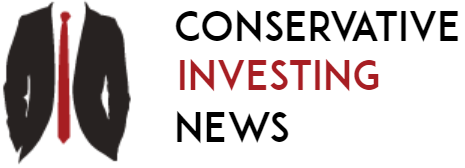Investing
Liberation Day was met with some pretty significant panic selling activity. And while it’s tough to justify buying shares in this environment as President Trump keeps raising the bar on tariffs on more than a handful of nations, I still think that a cool, calm mindset and a greater focus on the long-term trajectory will allow investors to stay the course as the fasten-your-seatbelt sign illuminates once again as we enter the month of April.
-
If the correction has you seeking lower betas and higher yields, the VYM and DIV may be your cup of tea.
-
If 2025 ends up a drawn-out rotation year, punching your ticket to a dividend ETF could prove smart.
-
Are you ahead, or behind on retirement? SmartAsset’s free tool can match you with a financial advisor in minutes to help you answer that today. Each advisor has been carefully vetted, and must act in your best interests. Don’t waste another minute; get started by clicking here here.(Sponsor)
Undoubtedly, Liberation Day, which pulled the curtain on tariff details, seemed much more than Wall Street may have expected. Indeed, perhaps retail investors thought Trump would be more willing to backtrack and reach some compromise to prevent further downside in a market already in a full-blown correction.
At this juncture, it’s unclear if there will be more such days in the future that will spark another rout in markets. Though we may be only halfway to an eventual stock market bottom, I still think drip-feeding extra cash into stocks over time could be the best way to go for both investors. If you’re nowhere near retirement, the tariff stock troubles shouldn’t scare you out of markets.
However, if you’re a retiree and you’re feeling the pain and growing anxiety, it’s time to give the lower-beta passive income plays another look (perhaps at the expense of the fastest-falling names atop the Nasdaq 100), as they look to act as a pair of shocks on your portfolio, helping ride out the growing number of potholes and cracks on the road to retirement while paying you dividends for staying aboard the bumpier ride. Here are two top income ETFs worth checking out as the tariff tumble drags into April.
Vanguard High Dividend Yield ETF (VYM)
For the Vanguard fans out there, the Vanguard High Dividend Yield ETF (NYSEARCA:VYM) seems like a wise buy to brace for tariff uncertainties and increased investor indigestion following Liberation Day. With the S&P 500 and Nasdaq 100 in correction territory, shares of the VYM are off just over 4% from their highs. The 0.06% expense ratio is a low price to pay for a basket of some of the bluest blue chip dividend payers in the U.S.
The higher dividend yield (2.61%) and less painful ride could make it a fine middleground for rattled retirees who are ready to cash out of the biggest winners on the capital gain front over the past two years. As investors rotate into defensive dividends and stocks with lower price-to-earnings (P/E) ratios, I view the VYM as having what it takes to top the S&P 500 if you’re of the belief that tariffs won’t be going away anytime soon.
Personally, I think some trade deals will be inked by midsummer. Though there’s always a chance we could end the year without much progress and perhaps even stiffer tariffs.
Global X Super Dividend U.S. ETF (DIV)
If a 2.5-3% yield won’t cut it, perhaps the Global X Super Dividend U.S. ETF (NYSEARCA:DIV), which currently sports a 5.4% yield, may be more your cup of tea. The ETF’s strategy provides exposure to some of the highest-yielding stocks in the U.S. And while chasing yield isn’t a good idea for retirees, I do think the ETF’s methodology helps dampen the risks of dividend reductions. With a 0.45% total expense ratio, do note you’ll pay more in fees than with a comparable Vanguard income ETF.
Underneath the hood, you’ll find names like Altria (NYSE:MO) and Verizon (NYSE:VZ), which boast hefty but well-covered 7% and 6% yields, respectively. While the higher yields could come at the cost of future capital gains, I must say that I’m a fan of the depressed valuations to be had in many of the DIV’s constituents. The ETF boasts a lower (0.76) beta, and while the ETF has been slumping in recent years, I do think that much of the pain is already baked in and that much of the tariff risks are relatively insulated.
Unless you must have a yield of 5%, I’d stick with the VYM over the DIV. Either way, if the DIV sinks further such that the yield passes 6%, it’s tough not to think about picking up a few shares of the “super” dividend ETF if lower beta and higher income are what you’re after.
Thank you for reading! Have some feedback for us?
Contact the 24/7 Wall St. editorial team.
